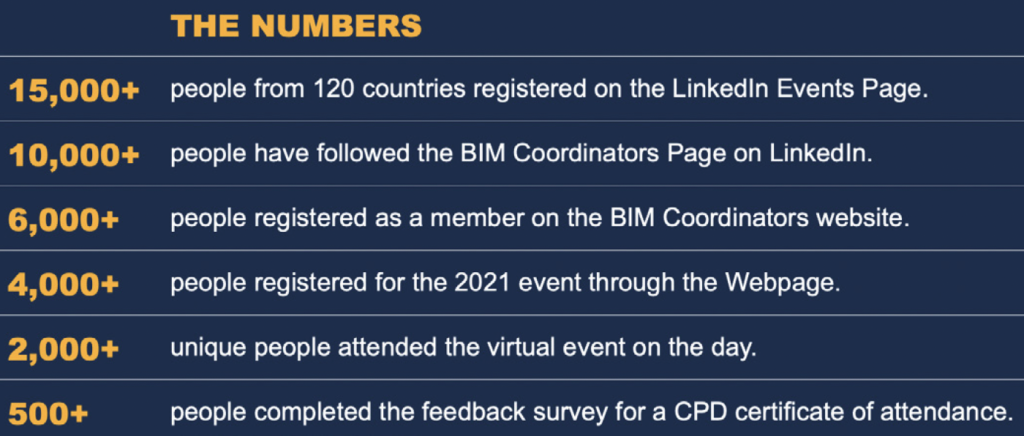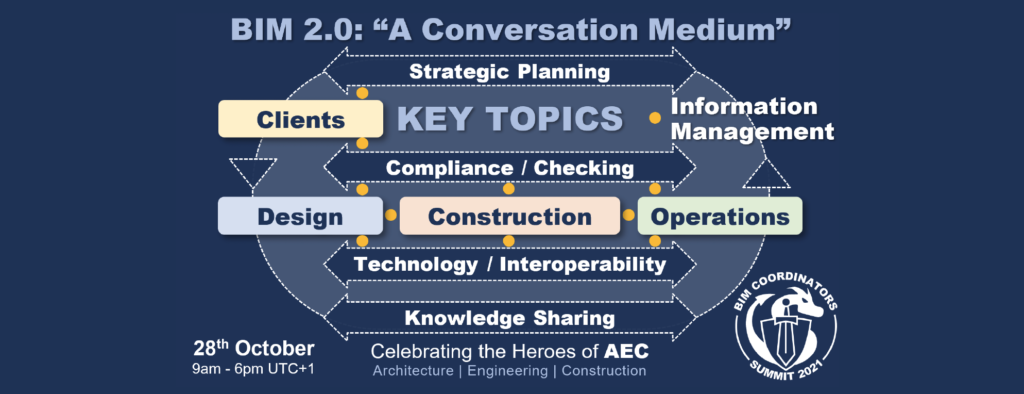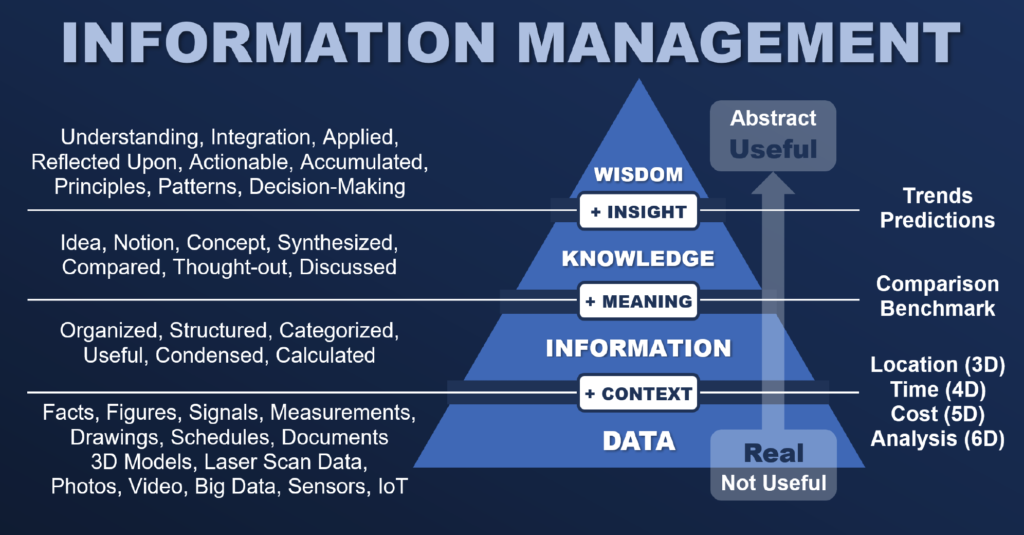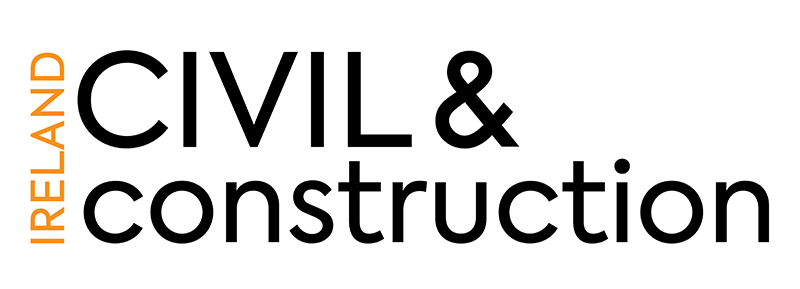
About the Author
Ralph Montague is an architect and director of ArcDox BIM Consultants in Dublin, Ireland. He is also a member of the National BIM Council of Ireland, board member of CITA (Construction IT Alliance), and current chair of the National Standards Authority of Ireland (NSAI) Technical Mirror Committee for BIM Standards. He is the past chair of the Royal Institute of Architects of Ireland (RIAI) BIM Committee, and RIAI representative to the Architects Council of Europe (ACE) BIM Working Group. He is also a part-time lecturer for the post-graduate diploma for Project Management course at Trinity College Dublin. He is co-founder of the aecHive ‘Community of Innovators’ platform, and coordinator of the Revit and Dynamo Users of Ireland Groups, as well as the co-founder of the recently established BIM Coordinators Summit community.

Civil and Construction Ireland recently caught up with Ralph Montague, director of ArcDox BIM Consultants in Ireland, who was the organiser of the first international Summit of BIM Coordinators, which was held on the 28th October 2021, as a “virtual” online event. This event attracted interest from almost 15,000 people from 120 countries around the world, through LinkedIn, and featured 35 leading experts in ‘Information Management’ from AEC (architecture, engineering, construction), participating on the day, in online presentations and panel discussions, covering all aspects of information management throughout the lifecycle of buildings and infrastructure.
An Event with Purpose
“With the digital transition of construction accelerating at pace, we wanted to create and event that would celebrate, recognise and appreciate the ‘value’ of digital information management in the AEC or built environment sector”, explained Ralph Montague, conference chair for the event, “and in particular, we wanted to take the opportunity for industry to celebrate, recognise and appreciate the people who perform the important roles of producing, managing and coordinating the information that brings our built-environment into being, and keeps it functioning. Nothing happens without ‘information’, and the quality of information impacts the performance and outcomes in the construction industry. Often these unsung ‘heroes’, who are carrying out these important roles, are not fully recognised, or appreciated. And so, as part of the event, we implemented the ‘BIM Hero Token of Appreciation’ award, which saw over 400 people from around the world get nominated, recognised and appreciated, by their colleagues and peers, and receive recognition through social media, as well as a physical medal and pin. The names of these “BIM Heroes” are also included in a ‘BIM Hero Register’ on the event website. Our aim is to continue this event, and the awards in future years, to help bring together an international community of like-minded individuals, who are ‘champions’ of BIM (building information modelling) and information management, to help raise the general awareness of the ‘value’ of information and move the industry forward in digital adoption”.

Ralph Montague explained further that the annual event was just one part of ‘Building a Community’, which aims to achieve the following objectives:
to significantly advance Digital Transition in AEC for the purpose of significantly improving performance/outcomes in AEC (productivity, performance, outcomes, safety, sustainability, etc).
to promote shared “values” (things we see as important) – the “value” of information to the built-environment (in relation to productivity, performance, outcomes, safety, sustainability etc), and the “value” of information managers (those actually doing digital information production, management & exchange – the BIM heroes).
to “celebrate”, recognise, appreciate and inspire excellence, in information management for AEC (architecture, engineering, construction).
to help and support each other (share knowledge and resources in an equitable way, that brings “win-win” solutions to the AEC sector).
What is a Summit?
A summit is “… the highest point or peak …” – a meeting or coming together of leaders in a domain of expertise for the purpose of sharing information, developing expertise, understanding and wisdom, to advance the objectives of the community. A “summit” is not just an event – it is the “peak” of a number of ongoing activities that occur during the year. It is a time to reflect on, recognize, appreciate and celebrate those activities, both the “wins”, and the “challenges”. It is a time to take stock, and recalibrate. It is a time to also look ahead, and plan going forward, to what activities should occur in the next 12 months. It is also a time to share knowledge and lessons learned with others, across the broader community, who may not have been intimately involved in those specific activities throughout the year, as an opportunity to foster relationships and cross-pollination of ideas and knowledge. It is also a time to meet new people, make new friends, or revive and develop previous acquaintances. To grow your network. Everyone should leave each “summit” richer and more informed, than when they arrived.
Conversations in BIM
The title and overall theme of the event was “Conversations in BIM”, and included 35 expert speakers who gave short presentations on the theme or topic, and participated in panel discussions, creating dialogue, or conversation, about the future of information management for AEC. The one-day event consisted of 2 keynote presentations, 8 topic discussions, and a presentation/demonstration from the main event sponsor, Revizto.
The opening address from Alain Waha, Chief Technology Officer from Buro Happold, a global engineering firm, discussed “BIM as the New Medium of Communication”. The keynote address from Paul Doherty, CEO of The Digit Group, an internationally recognised smart cities expert and real estate adviser, described the journey of BIM, from the past to the present, and focussed on the future of BIM, as an intrinsic technology to drive the AEC sector. The 8 major themes or topics each had 3 speakers and a panel moderator, focused on the following topics (all talks are available on the BIM Coordinators Summit YouTube Channel):
BIM for Strategic Project Planning (Consultancy)
– Rebecca De Cicco @ Aurecon
– Gavin Crump @ BIM Guru
– George Mokhtar @ Turner Townsend
Moderator: Cillian Kelly @ John Sisk & Son Ltd
BIM for Appointing Parties (Employers/Clients/Developers)
– Michael Earley @ Dublin Airport Authority (DAA)
– Peter McDonnell @ Dublin City University (DCU)
– Robert Moore @ Grangegorman Development Agency (GDA)
Moderator: Cillian Kelly @ John Sisk & Son Ltd
BIM for Appointed Parties (Design)
– Aonghus O’Keefe @ Roughan O’Donovan
– Davitt Lamon @ C+W O’Brien Architects
– Enda Kirwan @ Arup
Moderator: Ronan Collins @ The Red Sea Development Company
BIM for Appointed Parties (Construction)
– Andy Boutle @ Kier Group
– David O’Brien @ Exyte
– Georgina Quigley @ ACB Group
Moderator: Ronan Collins @ The Red Sea Development Company
BIM Technology / Interoperability Issues
– Mohammad Shana @ Morta
– John Egan @ BIMLauncher
– Dimitrie Stefanescu @ Speckle Systems
Moderator: Ruth Ramsden @ L&Q Housing Association/ Women in BIM
BIM and the The ‘Golden-Thread’ (Date Compliance & Checking)
– Clive Jordan @ Plannerly
– Stephen Hamil @ NBS
– Vicki Reynolds @ i3PT
Moderator: Ruth Ramsden @ L&Q Housing Association/ Women in BIM
BIM for Post-Construction / Asset Management
– Graham Stewart @ Digital Guerrilla
– Anand Mecheri @ Invicara
– Pierre Venter @ Integrated Facilities Solutions (IFS)
Moderator: Claire Penny @ Invicara
BIM for Building ‘Digital’ Competency / Education
– Vaughan Harris @ Exceptional BIM
– Amanda Wachendorf @ Eaglepoint
– Pat Slattery @ ArcDox
Moderator: Claire Penny @ Invicara

The Importance of Conversation (or Stories)
The conference used the theme “Conversations in BIM”, because throughout history, humans have shared information, knowledge and wisdom through conversations, or telling of “stories”, shared by one generation to the next. The “story” is the most fundamental form of communication, or exchange of information, or transfer of knowledge, to help a community or society to progress and prosper. And that tradition continues to this day, at any social gathering, including events like this. We all love a good story. And the ability to tell a good story, and convey an important message, is an essential life skill for leaders.
As a community, the BIM Coordinators share a common passion for how technology can support better information, better communications, or the transfer of knowledge, to help make the built world a better place. The built environment supports almost everything we do as a society, providing place for shelter, commerce, education, care, and entertainment. Our world needs better infrastructure, to support growing, ageing and urbanizing populations, and we need to deliver that in quicker, safer and more sustainable ways. Over the day, the experts discussed key aspects of BIM and information management, from all perspectives. These will be the “stories” that bring progress and prosperity to the global community in architecture, engineering, construction, and the real-estate property or infrastructure asset management sector.

The BIM Hero Story
A major theme in the marketing leading up to this event, was to celebrate the “BIM Heroes” of AEC. The “hero story”, is something that everyone can identify with. It is the underlying story, of everyone’s’ life, and of every good book, film, TV show or play. It is the way we experience our journey. We “encounter” good and bad things, along the way, that either help or hinder our progress. Opportunities or tools. Threats or obstacles. The “hero” of the story has to take responsibility to “confront” these challenges, and make decisions on how to act, or move forward, or backward, to work around, or change direction), based on what they “value”, or what they find important. Information, knowledge, experience, understanding, wisdom, is what helps the “hero” make these decisions. A commitment to pursuing what is ultimately good or beneficial, the ability to “see the bigger picture” or “do the right thing”, over what is expedient (quick, easy or short-term), helps the “hero” to know how to act, or what to do, or where to invest their time, effort, or resources, and maybe even sacrifice or give up things that are holding them back, from realizing their potential. The thing of “value” that the “hero” is pursuing, is better information, or better knowledge, which can guide them to a better life or future. This information lies in the “chaos” of what is currently unknown, uncertain, unresolved, or unchartered. The “chaos” shouldn’t be seen as something to be avoided – because the “unknown” is where the potential for innovation lies, to discover something new and extract “value”. The “hero” is willing to “confront”, explore and adventure into the unknown, to explore and discover, or “fight” to bring new “order” or certainty into being.
The hope is that the “hero” story will appeal and engage everyone in this community, at a deeper unconscious or “core” level, that goes beyond the surface identity of nationality, gender, profession, discipline or title, to help everyone to “identify” with the subject, and the community, to engage in deeper, more meaningful conversations about the ‘value of information’ and the ‘value of information managers, in bringing about a better future in the built environment.
The Importance of Information
In today’s digital age, we are surrounded by data. Some might even say too much information. But it doesn’t make any difference, until we begin to organize and categorize that data, assigning values of trustworthiness, authorship, governance, responsibility, liability, context, historical background, etc. The “meta-data”, or “data about data”, is what makes information useful, actionable, or meaningful. From meaningful structured data, or information, we can begin to learn, or gain knowledge, which, when combined with experiences and insights, gives us understanding, or wisdom, to decide how we should act in the world. The “data” by itself is real (but useless). The “wisdom” is more abstract (but very useful). The conference aimed to share conversations, of gained insight and wisdom, through the respective journeys of the participants, and to have meaningful conversations and discussion about how we move forward into a better future. That future will be created through information, which is produced, managed and coordinated by those participating in this community.
Who are the ‘BIM Coordinators’?
This is an international ‘community’ or group of people, who are engaged in the planning, procurement, production, management, and exchange of ‘information’ in the built environment or AEC sector (architecture, engineering, construction, real-estate, property and intrastate asset management) using BIM (building information modelling and/or management). The community believes that ‘Information’ is extremely important, as it effectively brings physical infrastructure into ‘being’ and allows that infrastructure to be optimally used, maintained, operated and re-purposed, in a productive, safe and sustainable way. The community is a broad and loosely defined group of people who take responsibility to coordinate and manage the information contributions, by others, or themselves, when using BIM (building information modelling). This includes BIM Authors (designers/contractors using BIM), BIM Managers, Information Managers, VDC (virtual design construction) Managers, BIM Consultants, BIM Technology and Service Providers, BIM Educators, BIM-enabled Project Managers, Cost Managers, Building & Infrastructure Asset Owners (Clients) and Facilities Managers. In fact, anyone interested in ‘Digital Information’ (better information) as it relates to the built environment or AEC sector.

Why Community?
Nothing significant is achieved or produced by individuals by themselves. Understanding the value of ‘community’ is understanding the “power of the collective” to bring individual strengths, knowledge, expertise and effort together, to multiply the outcome and productivity of the group as a whole, to meet its objectives, and to the greater benefit of all the individuals, in a ‘win-win’ or self-sustaining way. When considering ‘community’ we regard the relationship between information (1), the physical built environment (2), and the people or individuals (3), as important. These are the things we ‘value’:
(1) Better Information
We understand that all physical reality, including the built environment, is ultimately made from “codified” information (organised collections of atoms, molecules, cells, materials, systems, elements, entities, etc). Even the definition of the word ‘information’, describes an active, or ‘living’ process of bringing things into being or understanding:
In_formation: “… to give form, to resolve uncertainty, to learn or provide facts, to instruct, to describe what an entity is, or is to be…”.
You could say that “Everything is Information, and Information is Everything”, and as a community, we believe that the built environment is made from ‘information’ by those who manage ‘information’. Of course, we also need to consider the ‘quality’ of information (whether it is good or bad). Better information brings better solutions to problems, and poor information could exasperate or cause problems. Better information could be defined as ‘truthful’; trustworthy, complete, accurate, clear, transparent, accessible, available, on time, etc. Where information is ‘good’, the level of understanding and communication between parties is far better, and this facilitates better productivity and a better outcome. The opposite is true for poor or ‘corrupt’ information, which is broken, unreliable, incomplete, incorrect, unclear, hidden, withheld, inaccessible, unavailable, late, etc. Where information is ‘bad’, the level of understanding and communication between parties is far worse, and this obstructs and hinders productivity and leads to poorer outcomes.
(2) Better Built Environment
Information, as it relates to the physical built environment, is important because physical infrastructure, supports almost all activity in societies for providing shelter, water, food, energy, communication, education, healthcare, transport, productivity, commercial and entertainment. Better information can bring about better performance and outcomes in the built environment, supporting better social, economic, quality, sustainability, and safety objectives. Societies where ‘information’ is ‘better’ (open, accessible, transparent, correct or truthful), tend to operate in a better way, and societies where information is poor or ‘corrupt’ (closed, inaccessible, withheld, incorrect), tend to operate badly.
(3) Better Individuals
As a community, we also aim to recognize and appreciate the unique and diverse qualities of each individual, as being valuable, regardless of age, nationality, race, gender, or beliefs, and how those qualities can contribute and be celebrated and nurtured to strive to make positive contributions to a collective and better future for the overall community, to meet it’s objectives. As in all things in life, some things are simple, known, predicable and certain (the ‘Order’) and other things are complex, unknown, unpredictable and uncertain (the ‘Chaos’). In the same way, people are all different. Some individuals will have a leaning towards ‘order’ and creating structure and certainty, while others will have a leaning towards ‘chaos’, creatively exploring uncharted potential to bring new ‘order’ into being. A thriving ‘community’ needs both types of people, to avoid stagnation or destruction, and both types should be accommodated, encouraged, recognized, and appreciated in open, inclusive dialogue.
BIM Coordinators Summit 2022
Plans are already in progress to host a “hybrid” event in 2022, with a “live” gathering of the “BIM Heroes” in Dublin, Ireland, in September, which will also be simultaneously broadcast “virtually” online to the international community. Anybody interested in participating or joining this community could go to the website at www.bimcoordinatorsummit.net, or follow the community on LinkedIn at www.linkedin.com/company/bim-coordinators-summit
